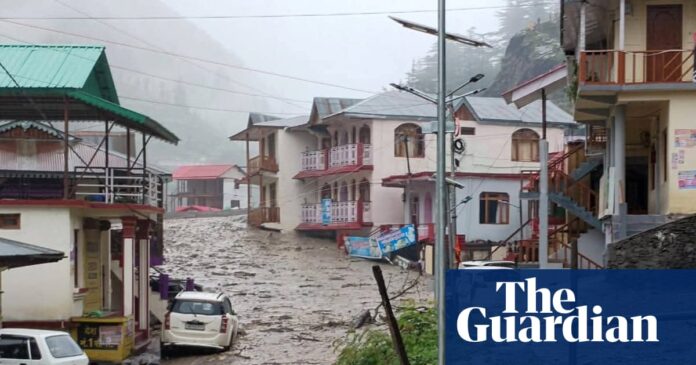"Devastating Cloudburst Triggers Catastrophic Flooding in Northwest India: What You Need to Know"
Cloudburst Triggers Catastrophic Flooding in Uttarakhand, India
A devastating cloudburst has been identified as a potential cause of a catastrophic flood that inundated the village of Dharali in northwest India, resulting in the deaths of at least four individuals and leaving approximately 100 others missing. The Indian Meteorological Department (IMD) reported that over the past 24 hours, extreme rainfall exceeding 210 mm was recorded in parts of Uttarakhand, where the disaster unfolded.
Uttarakhand’s Chief Minister, Pushkar Singh Dhami, confirmed that the region experienced a significant cloudburst prior to the deluge of water and debris that swept through the village. This phenomenon, characterized by intense rainfall over a small area, has raised concerns among meteorologists and local authorities alike.
Understanding Cloudbursts
Meteorologists in India define a cloudburst as a sudden and intense rainfall event occurring over a concentrated area of 30 square kilometers or less, with rainfall rates exceeding 100 mm per hour. Such events are particularly common in mountainous regions during the monsoon season. Ruchit Kulkarni, a meteorologist at the University of Melbourne, explains that cloudbursts typically occur when moisture-laden air from the Arabian Sea is forced upwards by the Himalayan foothills, a process known as orographic lift.
As this moist air ascends, it cools and condenses, forming towering cumulonimbus clouds that can sustain large raindrops. "The cloud gets bigger and bigger, and with no chance to release rainfall, it becomes so heavy that it eventually bursts," Kulkarni elaborates. This sudden release of water can lead to flash floods, particularly in vulnerable areas like Dharali.
Historical Context and Implications
The recent cloudburst is reminiscent of the catastrophic floods that struck Kedarnath in June 2013, where a similar meteorological event was implicated. According to a United Nations report, over 6,000 people lost their lives during that disaster. A study examining the Kedarnath floods suggested that more than half of the rainfall during that event could be linked to increases in greenhouse gases and aerosol particles in the atmosphere, indicating a potential connection between climate change and extreme weather events.
Recent research has shown a marked increase in extreme rainfall events across India in recent decades, correlating with rising global temperatures. This trend raises alarms about the potential for future disasters, particularly in regions already susceptible to flooding.
Current Situation and Response
In the aftermath of the Dharali flood, local authorities are mobilizing rescue operations to locate the missing individuals and provide assistance to those affected. Emergency services are working tirelessly to clear debris and restore access to the village, while the IMD continues to monitor weather conditions in the region.
As the situation unfolds, experts emphasize the need for improved forecasting and disaster preparedness in vulnerable areas. The increasing frequency of extreme weather events underscores the importance of understanding the complex interactions between climate change and local meteorological phenomena.
The tragic events in Dharali serve as a stark reminder of the potential dangers posed by climate-related disasters, highlighting the urgent need for comprehensive strategies to mitigate risks and protect communities in the face of an uncertain future.
